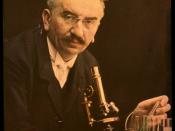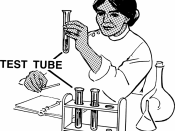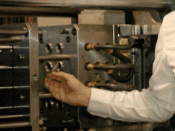Lab Ex#8: "Enzymes: Catalysts of Life"
INTRODUCTION
Enzymes are protein organelles where chemical reactions take place to generate energy within our cells. Without the energy produced from the cell enzyme activity, we would not possess the catalyst activity necessary for energy to produce movement.
Each enzyme performs a specific function within our bodies. Those functions performed can be significantly altered with the introduction of variables outside their environment. Variables, such as temperature increases or decreases, can instigate dramatic effects on the enzyme and its intended function.
The enzyme has a three-dimensional structure that is specific for the acceptance of a unique like enzyme and when fused together they form a new complex product. The enzyme then returns to its original state, upon which time recycles this process of fusion with its specific substrate.
The experiment was to observe what occurs when the enzyme is introduced to a range of temperatures and to determine if an enzyme having similar characteristics will perform the same chemical reaction.
PROCEDURE
1. Formation and Detection of Benzoquinone:
- Stations were set up having three test tubes, a wax marker and a ruler for measuring. We were to indicate measurements on each test tube at 1cm and 2cm from the bottom. We then identified each test tube as 2a, 2b, and 2c.
- We filled each test tube with the following: 2a with 1cm of potato extract containing Catechol Oxidase and 1cm of 1% Catechol Solution; 2b with 1cm of potato extract containing Catechol Oxidase and 1cm of dH2O; 2c with 1cm of 1% Catechol Solution and 1cm of dH2O. We tapped each tube to completely mix the solution and recorded the time at zero.
- At zero time, each test tube was scaled for color concentration. A color range, zero to five, was...


